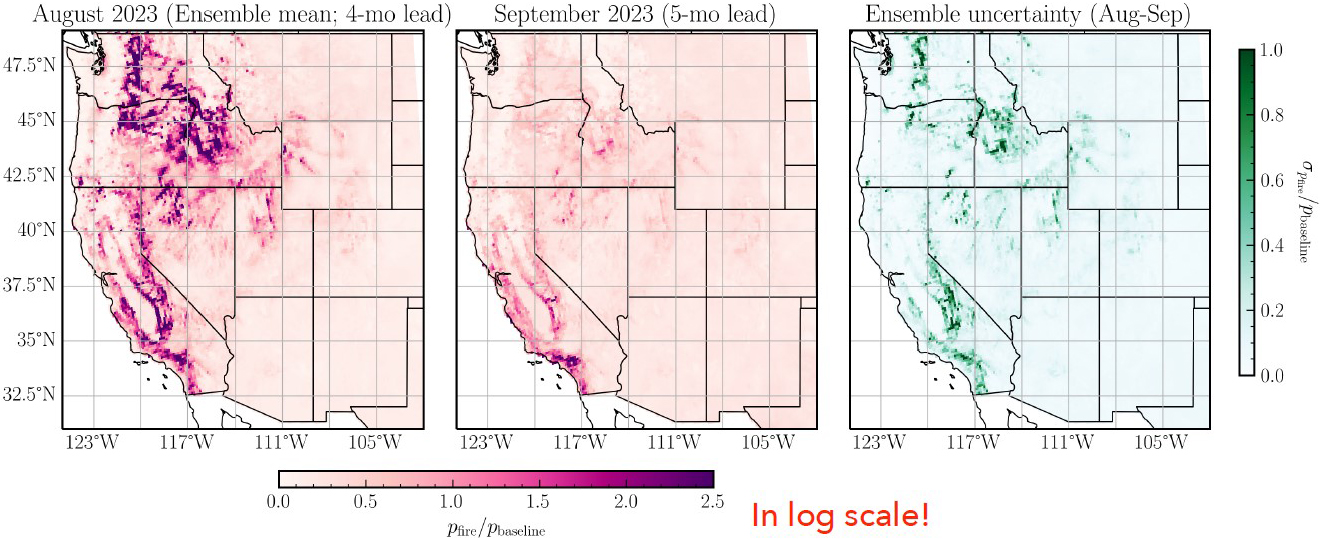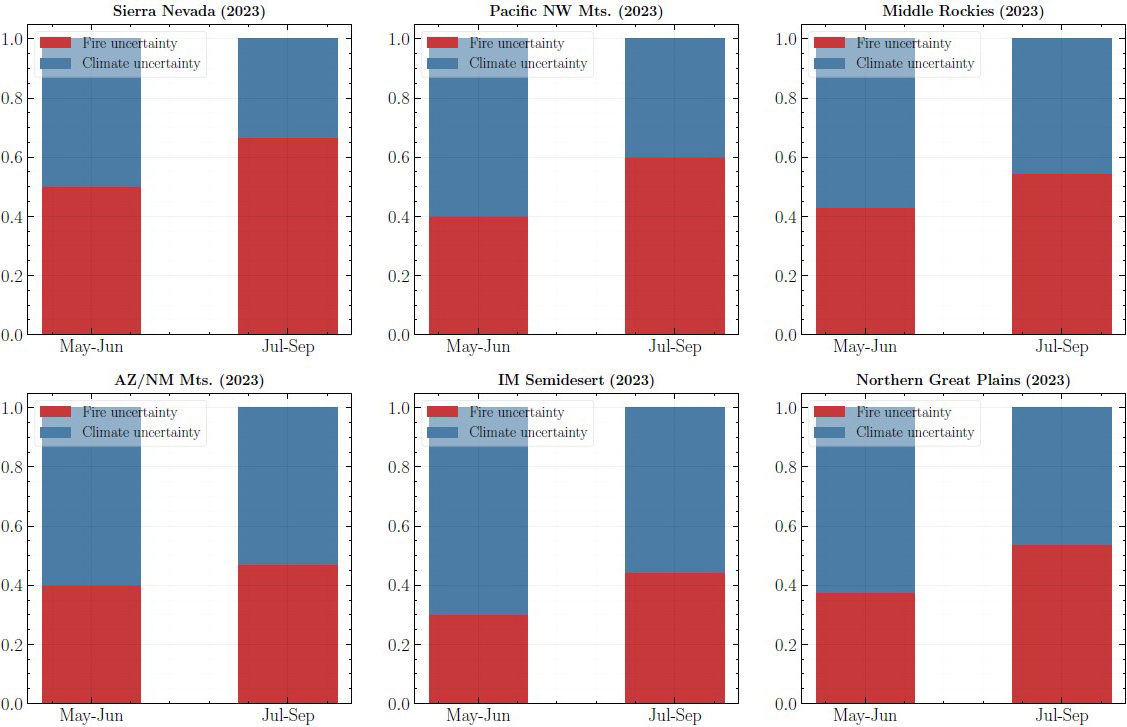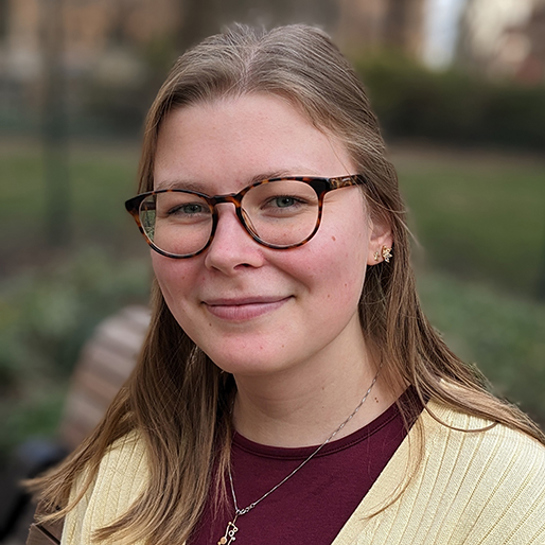Machine Learning Forecasts Wildfire Risk on Subseasonal to Seasonal Timescales
To devise fire management plans, decision-makers need to understand the evolving nature of wildfires under climate change across different regions and environments. “A case study for fires in a warming world that we experienced in different ways was the 2023 Canadian fire season,” Jatan Buch of Columbia University said. “This heralded what fires in a warming world would look like.” This record-breaking fire season was longer than normal, with larger burn areas and more severe fires.
The three-part minisymposium session on “Advances in the Numerical and Statistical Modeling of Wildland Fires” at the 2024 SIAM Conference on Mathematics of Planet Earth—which is taking place this week in Portland, Ore., concurrently with the 2024 SIAM Conference on the Life Sciences—featured a number of talks that addressed mathematical aspects of studying fires. “The idea was to bring together researchers in different areas of modeling and observation and identify collaborative ways to improve wildfire resilience,” Buch, a co-organizer of the session along with Gabriel Provencher Langlois of New York University, said.
Buch’s own minisymposium presentation focused on machine learning approaches to forecasting wildfires, with a particular focus on the western U.S., where the burn area is pushing into the wildland-urban interface. Buch first discussed a stochastic machine learning (SML)-based model called SMLFire, which enables data-driven statistical wildfire modeling. SMLFire approximates the world as a \(12 \times 12\) kilometer grid with a monthly temporal resolution; the largest fires spread across multiple grid cells. The model includes 51 potential predictors—which are classified into the categories of “Hot,” “Dry,” “Indices,” and “Other”—and incorporates measures of vegetation, topography, and human-related activities. It utilizes a mixture density network with a generic loss function to capture both fire size and frequency. SMLFire’s results show the burn variation in the western U.S. on the scale of months or years — though it does not perform as well for years with extreme fire events. “There is an overall increasing trend that the model is able to capture,” Buch said.
For fire forecasting, the current state of the art is the monthly fire potential outlooks that are published by the National Interagency Fire Center. “It would be great to have probabilistic fire outlooks that could contribute to decision-making to mitigate risks,” Buch noted. As such, Buch next described SEASFire, a machine learning algorithm with stochasticity that produces seasonal and subseasonal-to-seasonal probabilistic fire forecasts based on key fire predictors from the European Centre for Medium-Range Weather Forecasts’ seasonal forecasting system SEAS5.

SEASFire incorporates prior observations, the SEAS5 ensemble, and SMLFire to produce models of fire frequency and fire size. These models allow for uncertainty quantification and produce fire vulnerability assessments that provide the uncertainty due to the climate and fire models — all of which contributes to planning for fire mitigation and containment. Buch and his collaborators first used SEASFire to create fire probability “hindcasts” with data from 2022. After calibrating the model using antecedent predictors that were fixed to their May 2022 values, they examined the model’s results for June, July, and August 2022. SEASFire was able to capture the elevated fire risks in particular areas, and accurately knew that there would be fewer, more severe fires at one particular place and time.
Next, the team used data up to April 2023 to generate forecasts of fire probability over the ensuing 2023 fire season and compared with observations. Figure 1 displays the forecasted fire risk in August and September 2023 as compared to the mean fire probability averaged from 2001 to 2020—which serves as a baseline—as well as the ensemble uncertainty for that time period. The model is able to pick up the elevated fire risk in the Pacific Northwest during that summer. Buch also displayed bar plots that quantified the contribution of uncertainties related to climate or fire to the fire risk predictions at different time periods and locations (see Figure 2), before discussing similar results for the burned area forecast.

Finally, Buch mentioned a study with Kyleen Liao (who was a high school student at the time of the work) to train a graph neural network based on data from sensor sites in California in order to predict hourly wildfire particulate matter (PM2.5) smoke emissions. This model can examine the tradeoffs and find optimal prescribed burn windows that will have the lowest impact on terms of air quality. “If you have a model that can show these interactions, it can help in terms of decision-making,” Buch said. Overall, integrating these models for fire and smoke into wildfire mitigation plans could help decision-makers better prepare to address wildfires.
Acknowledgements: Jatan Buch acknowledged collaborators Park Williams (University of California, Los Angeles), Winslow Hansen (Cary Institute of Ecosystem Studies), Kyleen Liao (Stanford University), Gabriel Langlois (New York University's Courant Institute of Mathematical Sciences), and Caroline Juang, Pierre Gentine, and Kara Lamb (Columbia University).
About the Author
Jillian Kunze
Master's student, Drexel University
Jillian Kunze is the former associate editor of SIAM News. She is currently a master’s student in data science at Drexel University.

Stay Up-to-Date with Email Alerts
Sign up for our monthly newsletter and emails about other topics of your choosing.



